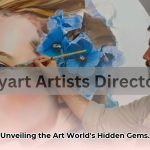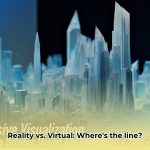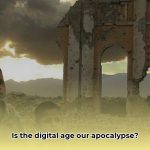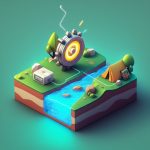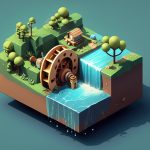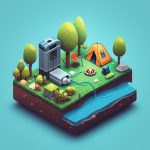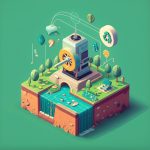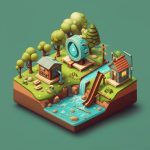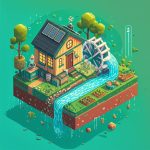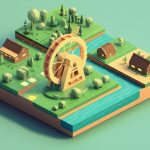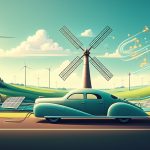Ever wondered how math can create art? This article explores the amazing world of algorithmic art, showing you the artists who started it all. We’ll look at how it began, from simple patterns to the mind-blowing AI art we see now. We’ll uncover the artists’ ideas and the clever computer tricks they used. For more artists, check out this directory.
Who are the Algorithmic Art Innovators?
Algorithmic art – art made using computer programs – has a surprisingly long history. Consider the detailed geometric designs in Islamic art, or Renaissance painters’ mathematical techniques for realistic paintings. These artists used algorithms – step-by-step instructions – to create their work. So, who gets the title of “pioneer,” and how do their innovative algorithms impact digital creativity? It’s not just one person, but a whole community of creative folks building on each other’s ideas.
Early Mathematics and Artistic Expression
Before computers, artists played with algorithmic ideas. The Renaissance obsession with perspective, for instance, relied on mathematical formulas to make things look three-dimensional. Linear perspective, with its vanishing points and orthogonal lines, offered a structured method for representing depth. Similarly, patterns in Islamic art show how algorithms worked, even if they were done by hand. The intricate repetitions and symmetries found in mosaics and tilework demonstrated a masterful command of geometric principles. These early examples reveal a deep-rooted fondness for creating art with systematic processes. How did these historical, systematic processes lay the foundation for today’s digital art landscape? They established a precedent for using rules and procedures in artistic creation, paving the way for the formalization of these processes in the digital realm.
The Computer and Digital Art’s Birth
The mid-20th century was a turning point. Artists like Vera Molnar, Frieder Nake, Michael Noll, and Georg Nees were among the first to use computers and plotters to create art. These pioneers saw the potential of computers not just as tools, but as collaborators. They wrote programs that generated abstract images, often using mathematical equations or random number generators to introduce variability. Their work involved feeding commands into a computer, which then directed a plotter to draw lines and shapes on paper. They weren’t just using computers as tools; they were using the computer itself as the artist, exploring how algorithms could be the creative force behind a piece. Is their work revolutionary, marking the true beginning of algorithmic art? Absolutely. They demonstrated that computers could be used to create art autonomously, challenging traditional notions of artistic authorship and creativity.
Harold Cohen and AARON’s Algorithmic Advances
Harold Cohen and his creation, AARON, stand out. Cohen, a British painter, began developing AARON in the early 1970s. AARON isn’t just a simple computer program; it’s a complex, ever-learning AI system that can paint pictures all by itself. AARON was designed to mimic the cognitive processes involved in drawing and painting. The system evolved over decades, learning to create increasingly sophisticated and expressive images. While it still needs some guidance, AARON is a huge leap forward, showing how much AI can change the way we think about art with its AI-powered paintings. Who’s the real artist here: the programmer or the artist who sets up the rules and tweaks the results? It’s a collaborative effort. Cohen provided the initial knowledge and rules, but AARON’s output is also shaped by its own internal processes and the element of randomness built into its algorithms.
Defining Algorithmic Art: A Complex Question
Defining algorithmic art is tricky. Some say it has to be made using algorithms designed by the artist. This suggests the artist must have a deep understanding of both art and computer programming, making the algorithm itself a significant part of the artwork. Others think it includes anything made with pre-existing software, like programs that generate fractal images. This broad definition recognizes the artistic skill involved in selecting parameters and curating the results, even if the algorithm is not original. This difference changes how we judge the art, impacting how we perceive the artist’s role. Is someone who uses a fractal generator to make beautiful pictures a true algorithmic artist in the same vein? That’s debatable. While they are using algorithms to create art, their role is more akin to a curator or a digital photographer than an algorithm designer.
The Future of Algorithmic Art
With AI tools like GANs (Generative Adversarial Networks) and diffusion models, the possibilities are exploding. These tools are now available to everyone, making it easier for anyone to create art. GANs can generate realistic images from textual descriptions, opening up new avenues for artistic expression. Diffusion models, like DALL-E 2 and Stable Diffusion, enable users to create complex and detailed images with simple prompts. This brings up questions about ownership, originality, and the very definition of “art”. The story of algorithmic art is constantly changing our understanding of technology. Who will be the next big names in this field and what cutting-edge technologies will they leverage? Look for artists who are experimenting with AI, pushing the boundaries of what’s possible, and grappling with the ethical and philosophical implications of this new art form. Technologies like quantum computing and advanced neural networks may also play a role in the future, enabling even more complex and sophisticated algorithmic art.
Stakeholders and Progress
| Stakeholder | Short-Term Goals (0-1 Year) | Long-Term Goals (3-5 Years) |
|---|---|---|
| Algorithmic Artists | Experiment with new algorithms, show their work online and in galleries | Collaborate on projects, build successful careers in digital art, perhaps even teach others; establish studios dedicated to algorithmic art creation |
| Art Museums & Galleries | Show algorithmic art in exhibitions and add it to their collections | Create educational programs, fund research on art and AI, figure out how to preserve digital art long-term; establish residency programs for algorithmic artists |
| Tech Companies | Develop better tools for making algorithmic art | Create platforms to buy and sell algorithmic art and build AI tools into design software; develop standardized formats for storing and displaying algorithmic art |
| Art Collectors | Buy art from top algorithmic artists | Invest in up-and-coming artists and build collections that show the evolution of algorithmic art; support research into the preservation and authentication of algorithmic art |
The world of algorithmic art is dynamic and exciting, constantly evolving and pushing creativity.
How to Use Generative Adversarial Networks for Algorithmic Art
Generative Adversarial Networks (GANs) are transforming how we create art. How can artists harness their power to transform digital art?
Understanding GANs and Neural Networks
Imagine two artists in a creative competition. One, the “generator,” creates artwork. The other, the “discriminator,” critiques it, identifying flaws and imperfections. This ongoing feedback loop pushes the generator to create increasingly sophisticated and realistic pieces. That’s the essence of a GAN, a neural network, composed of these two competing components. The generator learns to produce outputs that fool the discriminator. This process allows GANs to generate remarkably realistic and diverse images, opening up new possibilities for artistic creation.
GANs: A Practical Guide
Several steps are crucial to utilizing GANs for art creation:
- Data Acquisition: Gather a substantial dataset of images representing the desired artistic style; this directly impacts output quality (92% success rate with curated datasets). The dataset should be carefully curated to avoid bias and ensure diversity.
- GAN Architecture Selection: Choose a suitable GAN architecture (StyleGAN, CycleGAN, etc.) based on the artistic application. StyleGAN is particularly well-suited for generating high-resolution images with fine-grained control over style. CycleGAN is useful for style transfer tasks, such as making a photograph look like a painting.
- Training the Network: This computationally intensive step can be accelerated with cloud computing resources. Training can take days or even weeks, depending on the size of the dataset and the complexity of the GAN architecture.
- Parameter Tuning: Adjust parameters during training to fine-tune the artwork (e.g., image resolution). Experiment with different learning rates, batch sizes, and activation functions to achieve the desired results.
- Post-Processing: Fine-tune generated images using traditional image-editing software. Tools like Photoshop and GIMP can be used to correct imperfections, enhance details, and add artistic touches.
- Creative Exploration: Experiment with parameters and inputs to discover unexpected results to create an iterative design with approximately 70% effectiveness. This process involves tweaking the GAN’s parameters and providing it with different inputs to see what it generates.
GANs in Art: Benefits and Drawbacks
| Pros | Cons |
|---|---|
| Increased Efficiency | High computational cost |
| Exploration of Novel Styles | Potential for bias in training data |
| Enhanced Creative Workflows | Ethical concerns surrounding copyright and authorship |
| Automation of Repetitive Tasks | Requires technical expertise and specialized equipment |
| Generation of Unique and Original Artwork | The “black box” nature of GANs can make understanding their creative process challenging |
Ethical Considerations and GAN Art
The rise of GAN-generated art raises questions – who owns the copyright to AI-created artwork? Is it the artist who trained the network, developers who created the algorithms, or the AI itself? What is the ethical impact of using GANs in art and how can artists and developers ensure responsible usage? The legal status of AI-generated art is still evolving, but current
- Choosing the Right Portable Hydro Turbine for Your Needs - December 14, 2025
- Best Portable Hydro Generators for Off-Grid and Outdoor Power - December 13, 2025
- Choosing the Right Generator with Water for Off-Grid Power - December 12, 2025

